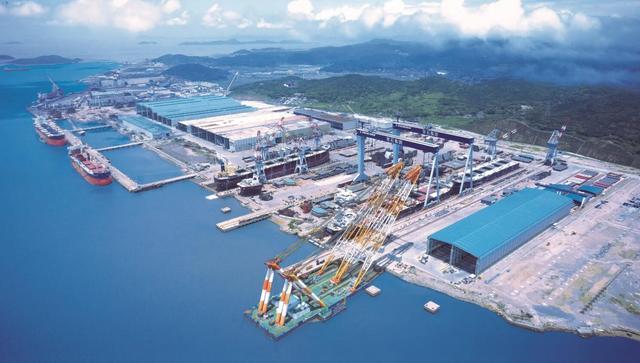Since the advent of laser technology, it has been widely concerned by society, and is known as one of the the Four Great Inventions of the twentieth century. With the continuous development of the times, the application of laser technology is also constantly undergoing transformation. In recent years, the power of lasers has been continuously increasing, and their applications have gradually penetrated into the field of heavy industrial manufacturing. In the shipbuilding industry, laser cutting, welding, and cleaning processes have begun to eliminate some old processes, which has had a certain impact on the entire shipbuilding industry. At present, major large shipyards in Europe, America, and Japan have extensively adopted laser processing technology.
The Application of Laser Cutting in the Shipbuilding Industry
The shipbuilding industry has very high requirements for the accuracy of hull section transfer, and the clearance of frame transfer must be controlled within a range of 1mm. In the past, shipbuilding enterprises generally used plasma cutting to cut the ribs. In order to ensure that the assembly gap met the standard, repair allowances were set on the ribs, which required on-site manual repair during assembly. The final quality of the repair was uneven. Manual cutting can lead to residual oxides in the cutting seam, and at the same time, it increases the workload of assembly, prolongs the assembly cycle, resulting in a significant extension of the entire segmented construction cycle.
At present, in the shipbuilding industry, the main cutting methods for hull plate parts include flame cutting, plasma cutting, shear processing, and laser cutting. Compared to laser cutting, other cutting methods have shortcomings in many aspects, such as flame cutting and plasma cutting, which can lead to wide cutting gaps, poor cutting accuracy, easy generation of harmful gases, and significant environmental pollution. The ship steel plate cut by laser has good cutting quality, good perpendicularity of the cutting surface, no slag hanging, thin oxide layer, smooth surface, no need for secondary processing, can be directly welded, and has small thermal deformation. The curve cutting accuracy is high, effectively reducing working hours and achieving obstacle free cutting of high-strength ship plates.
As early as 1992, Vosper Thornycroft shipyard was the first in Europe to use laser cutting equipment. Subsequently, shipyards across Europe installed complete sets of equipment for welding and cutting. In the United States, Bender Shipyard was the first shipyard to use high-power laser cutting equipment. In 1999, Bender used a 6KW Tanaka LMX III laser, which made significant progress in manufacturing costs and quality.
In recent years, “precision shipbuilding” and “rapid shipbuilding” have become the main trends in the development of shipbuilding industry, and laser cutting technology has been rapidly developed. The shipbuilding industry mainly relies on steel plate raw materials, and the use of laser cutting of plates can replace some processing methods that require large mold punching, greatly shortening the production cycle and reducing processing costs. The use of laser cutting machines to cut materials eliminates assembly allowances, eliminates the phenomenon of on-site cutting, reduces labor and board waste, significantly accelerates the assembly speed of the framework, and significantly improves assembly quality.
Although laser cutting has obvious advantages, there are also many problems in its application. At present, laser cutting does not occupy a dominant position in the domestic shipbuilding industry. The main reason is that laser cutting costs are higher than traditional cutting methods; Large equipment for laser cutting is not suitable for the manufacturing characteristics of the shipbuilding industry, such as on-site construction, segmented operations, complex working environments, etc; Laser cutting does not have a significant advantage in efficiency, especially in the shipbuilding industry for cutting thick plates; The maintenance of laser equipment is complex, with high demands on workers and high maintenance costs.




































